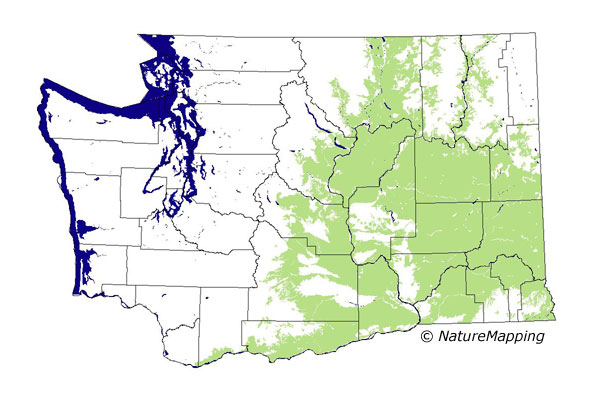 |
Metadata (Data about data or how the map was made)
Legend:
 = Core Habitat
= Core Habitat
 = Marginal Habitat
= Marginal Habitat
Predicted Distribution
Reptiles do not migrate as some birds and mammals, so the colored areas depict
the predicted range for the Racer year-round. The habitats were identified
using 1991 satellite imagery, other datasets and experts throughout the state,
as part of the Washington Gap Analysis Project.
Other
maps & Information:
|
Distribution and Habitat Requirements
The northern limit of this species parallels front depth contours in some areas and appears related to mean summer temperatures. This species is
found in meadows, sagebrush flats, forest edges and fence rows. Brown and Parker (1976) found that more than 90% of C. constrictor) returned
to the same hibernaculum each year. The high percentage of den fidelity may increase its vulnerability to human habitat modification.
An egg-laying reptile, such as C. constrictor, may also use open oak woodlands in a dry region or where soils are well-drained.
Models
The Northwest, Southwest and East Central Cascades ecoregions, Columbia Basin, Blue Mountains, Northeast Corner and Okanogan Highlands ecoregions
were selected.
All zones in the Columbia Basin were core, plus Oak, Ponderosa Pine, Interior Douglas-fir and Western Hemlock. In the Northeast Cascades, only steppe
zones were included.
Grasslands, shrub savannas, shrublands and soil conservation reserve lands were good habitats. Non-irrigated agriculture was adequate habitat.
Since the point locations in the Puget Trough and the Vancouver areas were pre-1970, with no more recent sightings, it has been assumed that the species has
been eliminated in those locations.
Translated from the Washington Gap Analysis Amphibians and Reptiles Volume by Karen Dvornich
Webpage designed by Dave Lester.